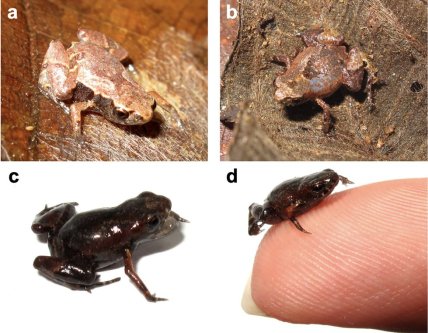Fits on a nail: Scientists discover one of the world's tiniest vertebrates (photo).
The tropical forests of Brazil are home to many amazing animals and plants, including some tiny organisms. For instance, a newly discovered frog measures just 7 millimeters in length.
This species was found in the Projeto Dacnis reserve in southern Brazil and has been named Brachycephalus dacnis. The research was published in the journal Zoological Science.
Frogs of this species prefer to reside on the forest floor within dense vegetation, away from prying eyes. It is also here that they find their food.
The presence of this new species was suspected by scientists after they heard the mating calls of males, described as "short multi-pulse sounds at high frequencies." After locating the source of the sounds, the scientists were able to discover the tiny creature, which will now be recognized as the second smallest vertebrate in the world.
Interestingly, the smallest vertebrate is also a frog, but from a different genus — Paedophryne amauensis. It resides on the other side of the globe, in Papua New Guinea, and likely has no idea about its "size counterpart."
The new species of Brazilian miniature frogs is characterized by smooth skin and patterns of dark crosses or stripes. However, there are other variations in coloration.

There are also certain differences in skeletal structure compared to related species. For example, in miniature species, skull bones often fuse or "extra" finger phalanges disappear, which helps their very fragile bodies become somewhat less delicate. Nevertheless, this frog has avoided such fate, and all parts are intact, just like in larger species.
In recent years, this animal has become the seventh newly discovered species in the miniature frog genus Brachycephalus. This raises questions among scientists about whether their size represents the limit of miniaturization or if these records will be surpassed as well.
As previously reported, the smallest dinosaur eggs were recently found in China, measuring just 23 millimeters in diameter.